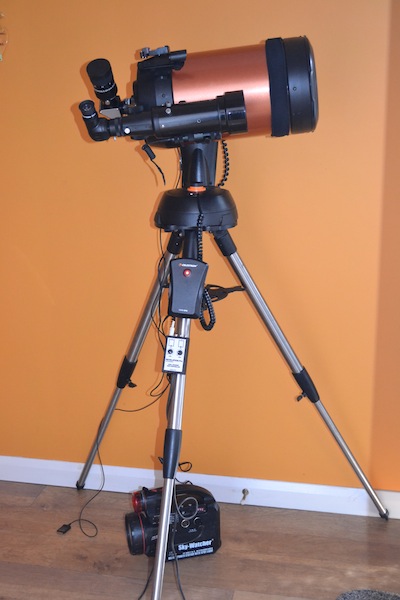

Furthermore, the mostly cloudy skies here also did not help. I just didn’t find it worthwhile to freeze my backside off just for an hour to see a few objects. Although winter nights were the best for observing because of the calm sky, they were the worst for comfort. It just took too much effort to drag out my LX200, set it up, align it, and then spend at most an hour looking at only a few objects before dragging it back into the house again. But most of all, I could not see most of the interesting objects that I had wanted to see, which was because of my observation site and also due to my unrealistic expectations. Unfortunately, what I saw was mostly small and gray, and with enough squinting and averted vision, I could just make out some colors. I think I had expected to see what Hubble saw (i.e., nice bright and colored nebulas and beautiful spiral galaxies).

However, in general, I was not impressed at all by what I saw. The two planets, Jupiter and Saturn are always impressive-especially, Saturn, with her rings, which I think is the prettiest object in the sky. Unfortunately, I live 40 miles from Chicago and the sky glow prevents me from seeing really dim objects except for a few brighter ones.

I took it out on the first clear night to see those objects that I had always wanted to see. When my LX200 arrived and I finally got my grubby little hands on it, I became that excited little boy again. The optical tube assembly is mounted on a fork and tripod in the alt-az configuration. It has an onboard computer that enables it to focus on any stellar object after it is aligned with known stars. Advertised by Meade as a research-grade telescope for the amateur, the LX200 is considered a “go-to” telescope by members of the astronomy community. And so, about 18 years ago, after a bit of research, I bought a classic Meade LX200 8″ telescope (see Photo 1).

I was also inspired by the Hubble Space Telescope photographs of nebulas and galaxies and wondered whether I could see those objects in a telescope with my own eyes and be filled with wonderment. When I was a child-I think, like most Circuit Cellar readers-I looked up into the night sky and wondered how cool it would be to have a telescope to look at the stars and have an up close and personal look at them. In order to overcome this flaw in alt-az mounted telescopes, I designed and built a field derotator that removes this degree of freedom and thus allows alt-az telescopes to become astrophotography platforms. Unfortunately, by leaving it uncorrected, alt-az telescopes cannot be used for long exposure astrophotography. The reason is that alt-az mounted telescopes have one more degree of freedom that is not corrected because it does not affect visual observations of celestial objects. However, the more popular computer-controlled telescopes for amateurs are altitude-azimuth (alt-az) mounted and usually deemed unsuitable for astrophotography. Most telescopes used by amateurs for astrophotography are equatorially mounted.


 0 kommentar(er)
0 kommentar(er)
